Abstract
The incidence of gonorrhoea in Sweden has shown a tendency to increase in recent years, particularly in the age-groups 15-19 and 20-24 years. However, an extrapolation of the annual incidence curve to 1970 for the 15-19-year age-group suggests that some deceleration in that increase may be expected.
Study of gonococcal complications seen at Göteborg hospitals during the period 1950-59 indicates that the frequency of gonococcal salpingitis is higher than had previously been reported; this is attributed to the inclusion in the material studied of patients from departments other than those exclusively concerned with the venereal diseases.
The authors conclude that, in view of the high frequency of gonorrhoea in the young and of gonococcal complications, gonorrhoea in Sweden cannot be considered an unimportant public health problem.
Full text
PDF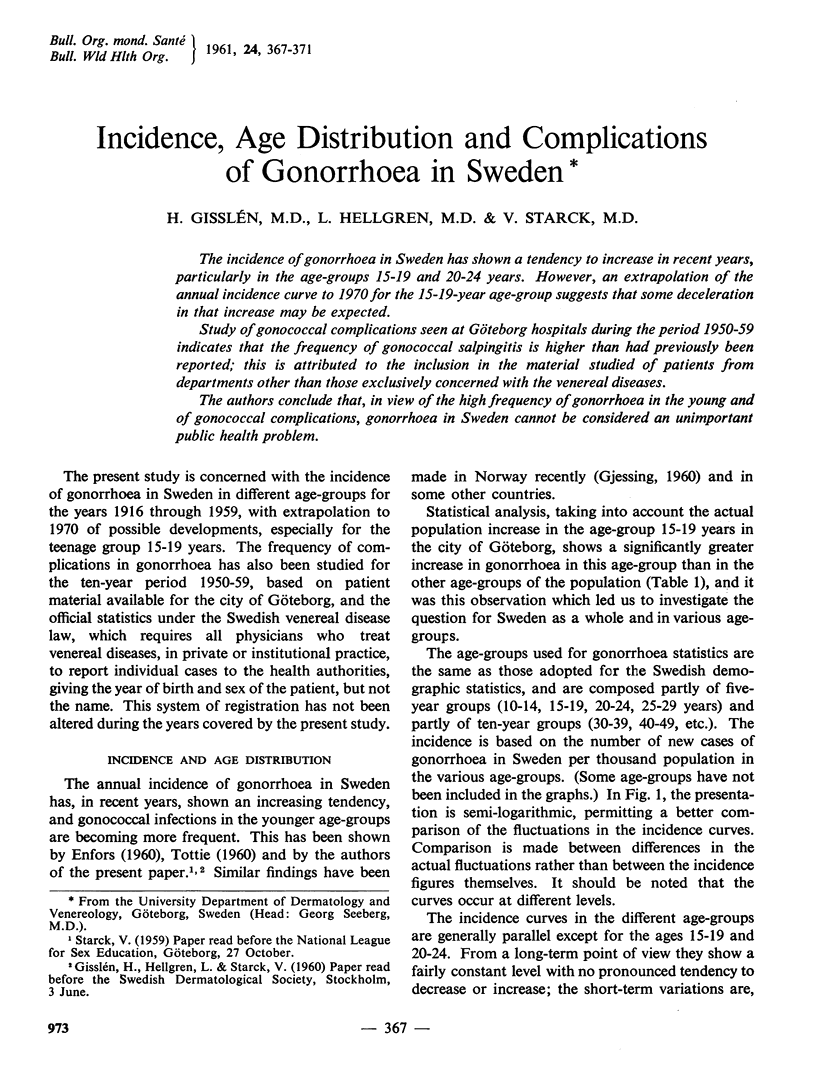
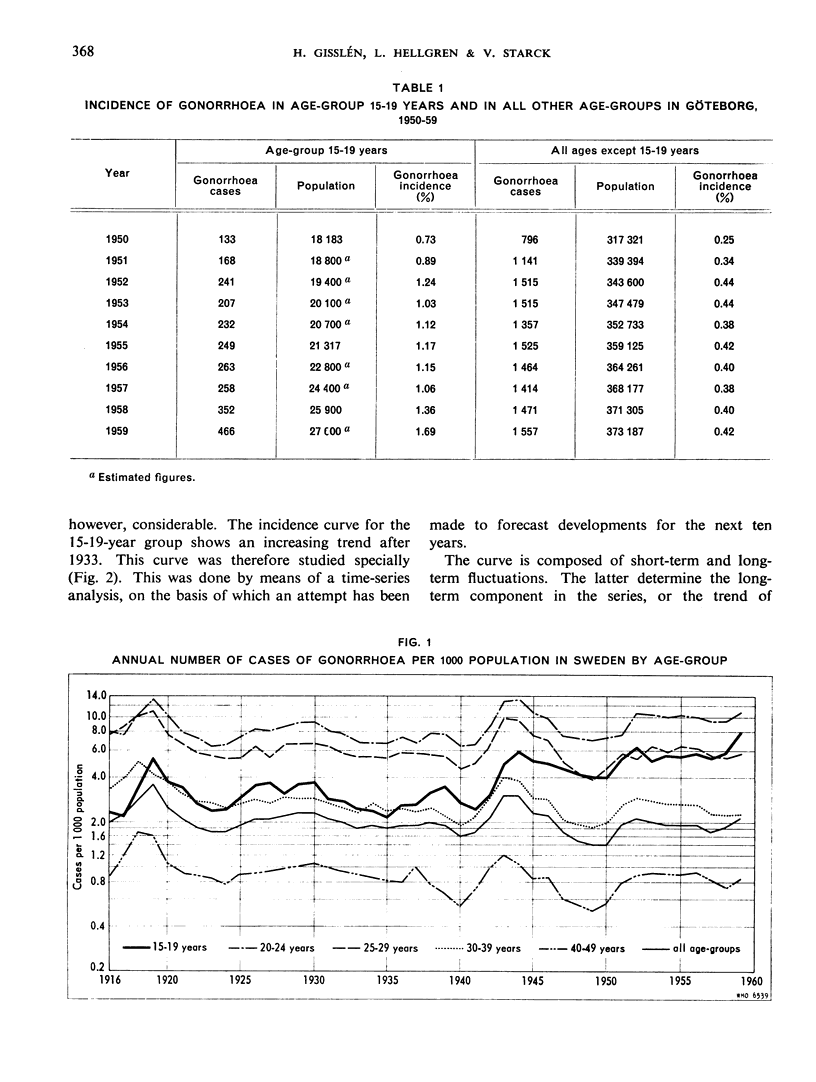
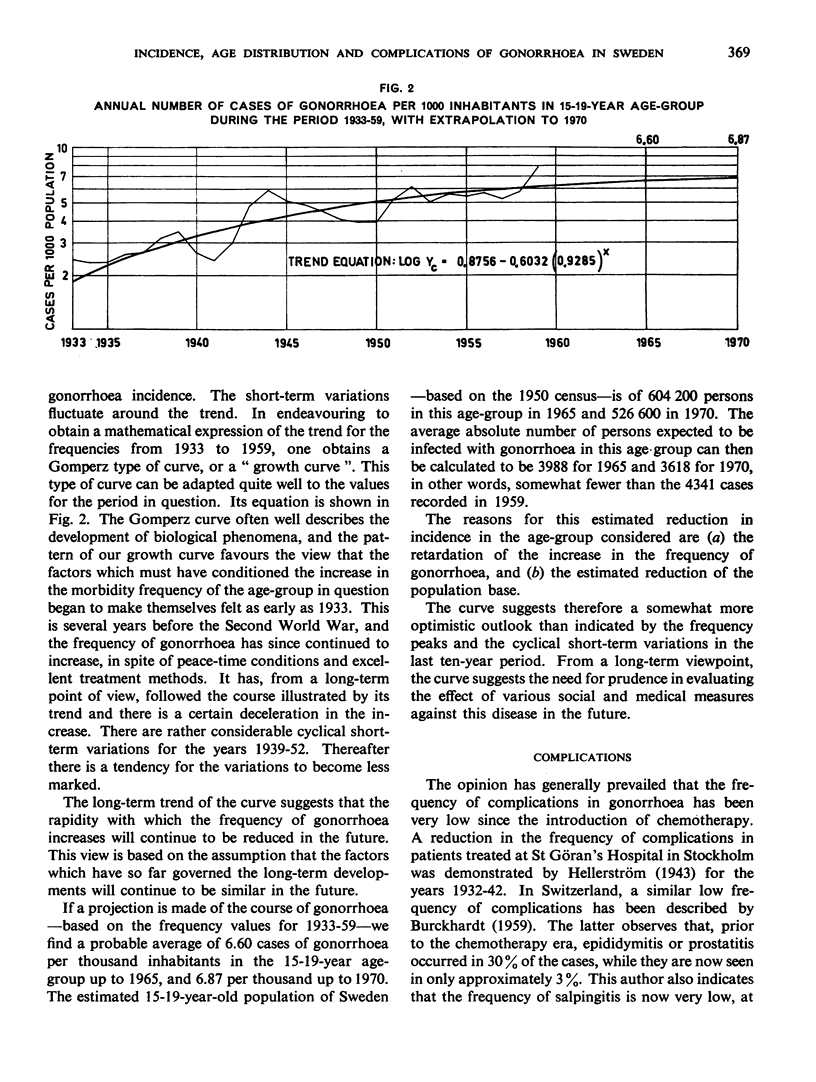
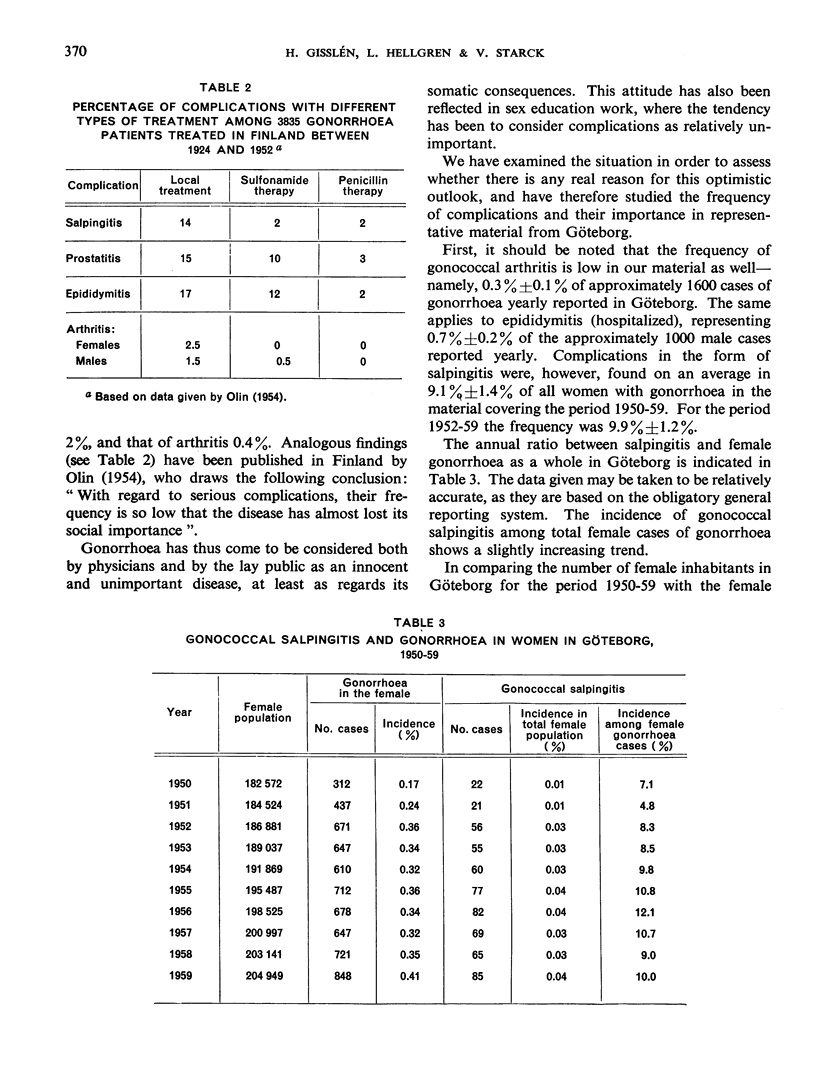
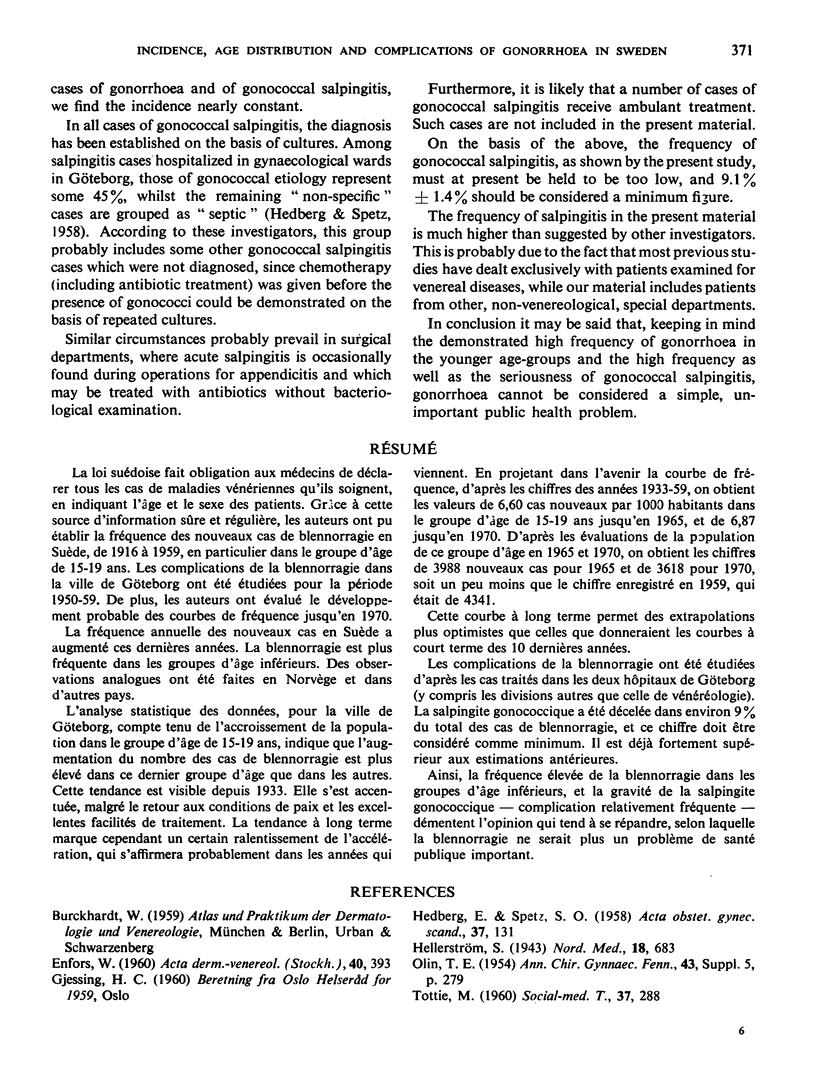
Selected References
These references are in PubMed. This may not be the complete list of references from this article.
- HEDBERG E., SPETZ S. O. Acute salpingitis; views on prognosis and treatment. Acta Obstet Gynecol Scand. 1958;37(2):131–154. doi: 10.3109/00016345809160050. [DOI] [PubMed] [Google Scholar]
- TOTTIE M. [Teen agers - a venereal disease problem today]. Soc Med Tidskr. 1960 Oct;37:288–290. [PubMed] [Google Scholar]


